
Truro is a cathedral city and civil parish in Cornwall, England. It is Cornwall's county town, sole city and centre for administration, leisure and retail trading. Its population was 18,766 in the 2011 census. People of Truro can be called Truronians. It grew as a trade centre through its port and as a stannary town for tin mining. It became mainland Britain's southernmost city in 1876, with the founding of the Diocese of Truro. Sights include the Royal Cornwall Museum, Truro Cathedral, the Hall for Cornwall and Cornwall's Courts of Justice.

Falmouth is a town, civil parish and port on the River Fal on the south coast of Cornwall, England, United Kingdom. It has a total resident population of 21,797.

Pencarrow is a Grade II*-listed country house in the civil parish of Egloshayle, in north Cornwall, England, United Kingdom. It is situated three miles (5 km) east-southeast of Wadebridge and three miles (5 km) north-northwest of Bodmin.
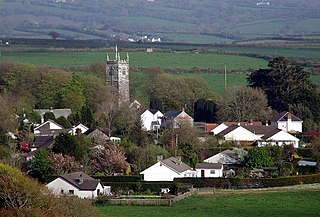
St Tudy is a civil parish and village in north Cornwall, England, United Kingdom. The village is situated in the River Camel valley approximately five miles northeast of Wadebridge.

Thomas Lobb (1817–1894) was a British botanist and, along with his older brother, William Lobb, collected plants for the plant nursery Veitch.

Trelissick is a house and garden in the ownership of the National Trust at Feock, near Truro, Cornwall, England. It is located on the B3289 road, just west of King Harry Ferry, and overlooks the estuary known as Carrick Roads. It lies within the Cornwall Area of Outstanding Natural Beauty (AONB). Almost a third of Cornwall has AONB designation.

Carrick Roads is the estuary of the River Fal on the south coast of Cornwall in England. It joins the English Channel at its southern end near Falmouth.

Probus is a civil parish and village in Cornwall, England, in the United Kingdom. It has the tallest church tower in Cornwall. The tower is 129 feet (39 m) high, and richly decorated with carvings. The place name originates from the church's dedication to Saint Probus. The parish population at the 2011 census was 2,299, whereas the ward population taken at the same census was 3,953.
Sir William Lemon, 1st Baronet was a Member of Parliament for Cornish constituencies from 1770 to 1824, a total of 54 years.
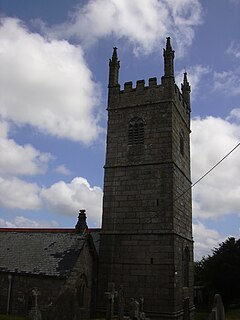
Mabe is a village and civil parish in Cornwall, England, United Kingdom. The village is situated one mile (1.6 km) west of Penryn.

Sir Charles Lemon, 2nd Baronet was a British Member of Parliament for several constituencies and a baronet.
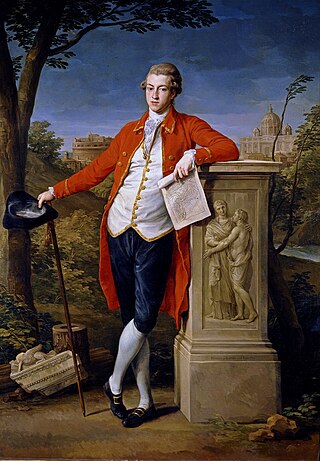
Francis Basset, 1st Baron de Dunstanville and Basset FRS of Tehidy in the parish of Illogan in Cornwall, was an English nobleman and politician, a member of the ancient Basset family.

Chiverton Cross is a road junction in west Cornwall, England, United Kingdom, about four miles north-east of Redruth and five miles (8 km) west of Truro at OS grid ref SW747469. Its name derives from Chyverton House which is in the extreme east of the parish of Perranzabuloe.
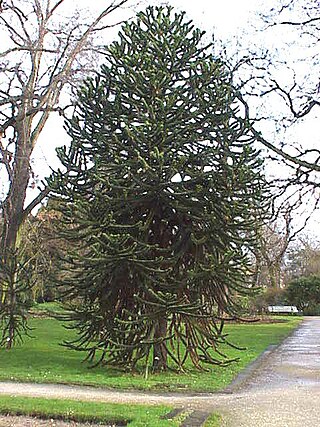
William Lobb was a British plant collector, employed by Veitch Nurseries of Exeter, who was responsible for introducing to commercial growers Britain Araucaria araucana from Chile and the massive Sequoiadendron giganteum (Wellingtonia) from North America.
Sir Christopher Hawkins, 1st Baronet FRS was a Cornish landowner, mine-owner, Tory Member of Parliament, and patron of steam power. He was Recorder of Grampound, of Tregony, and of St Ives, Cornwall.

Polmassick is a hamlet in the civil parish of St Ewe in Cornwall, England. It is about half a mile southwest of St Ewe Churchtown. A stream of the same name flows through the area, which is inhabited by trout.
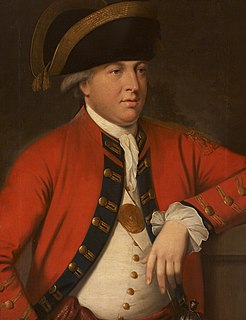
John Lemon was a British Whig Member of Parliament.
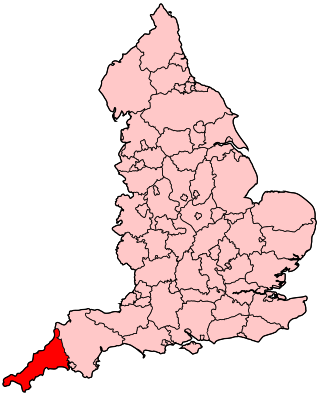
The following outline is provided as an overview of and topical guide to Cornwall: Cornwall – ceremonial county and unitary authority area of England within the United Kingdom. Cornwall is a peninsula bordered to the north and west by the Celtic Sea, to the south by the English Channel, and to the east by the county of Devon, over the River Tamar. Cornwall is also a royal duchy of the United Kingdom. It has an estimated population of half a million and it has its own distinctive history and culture.


















